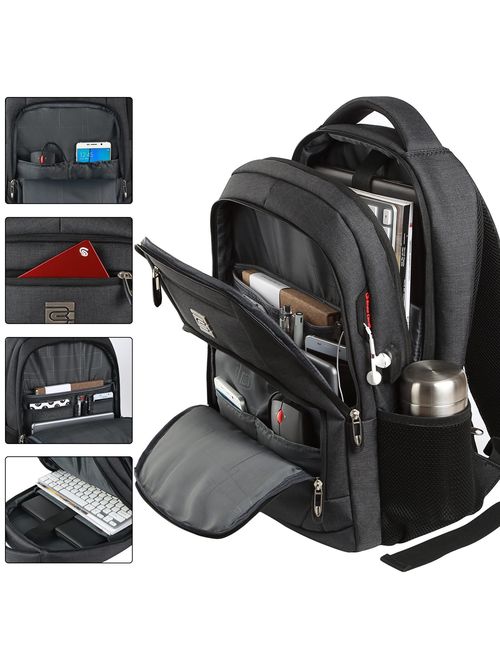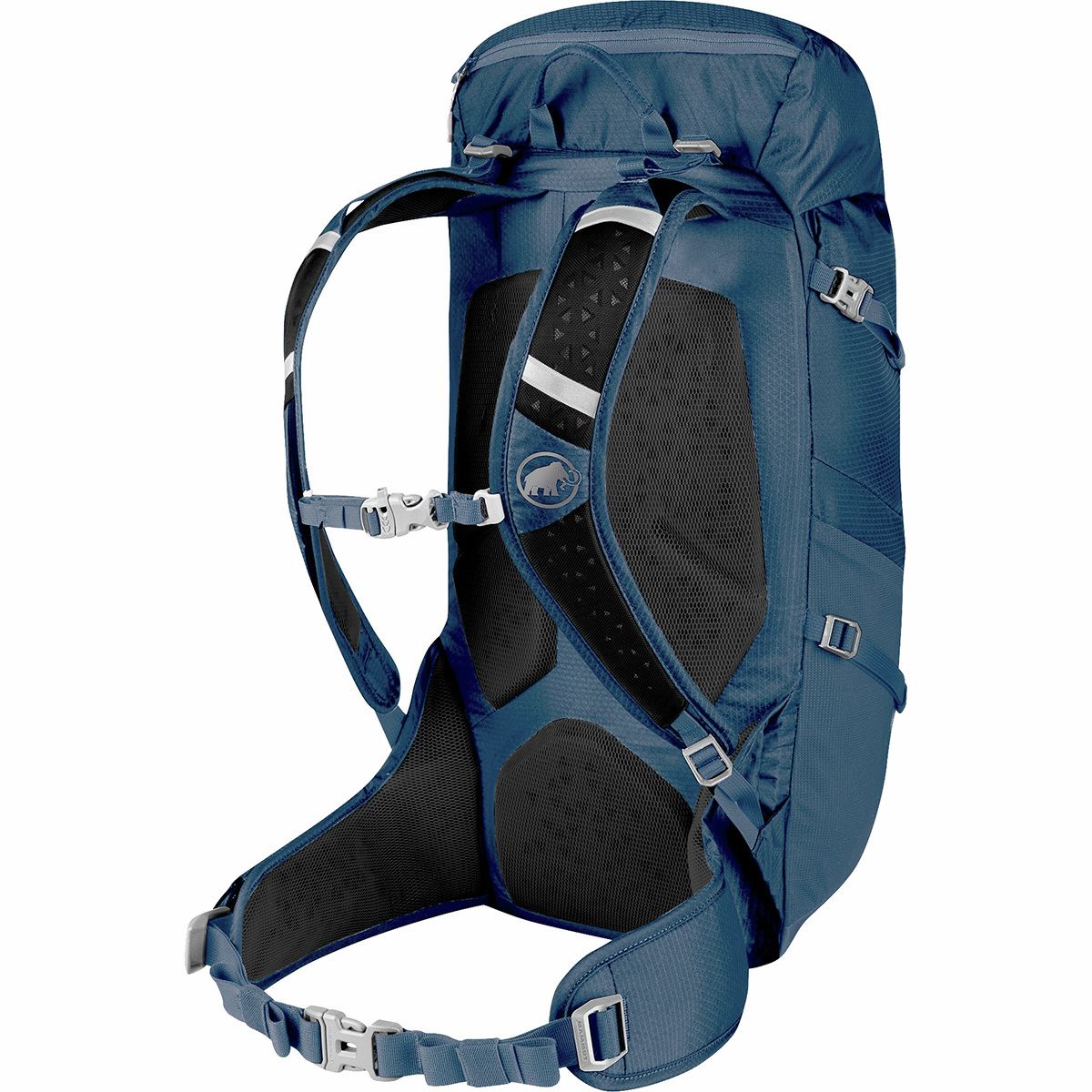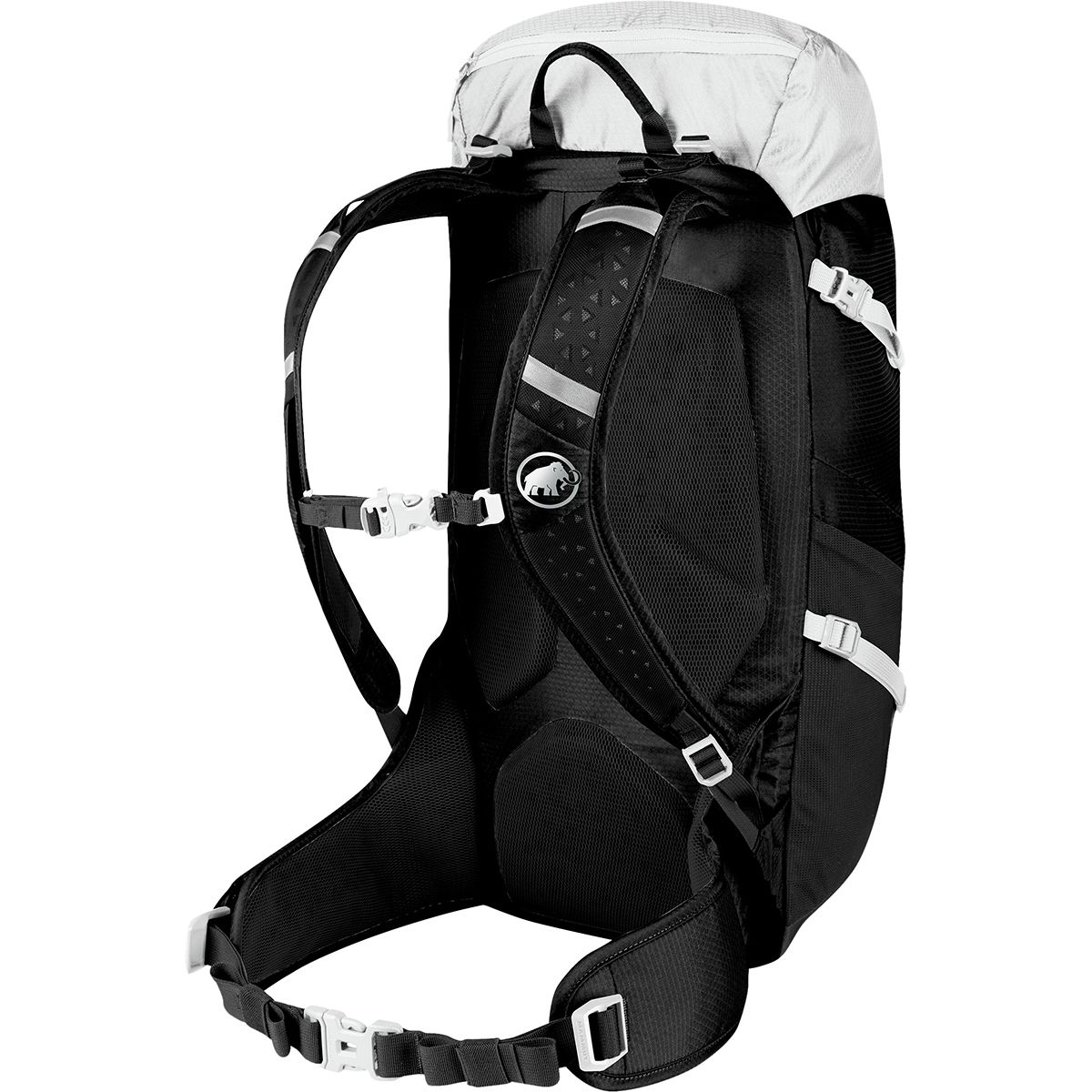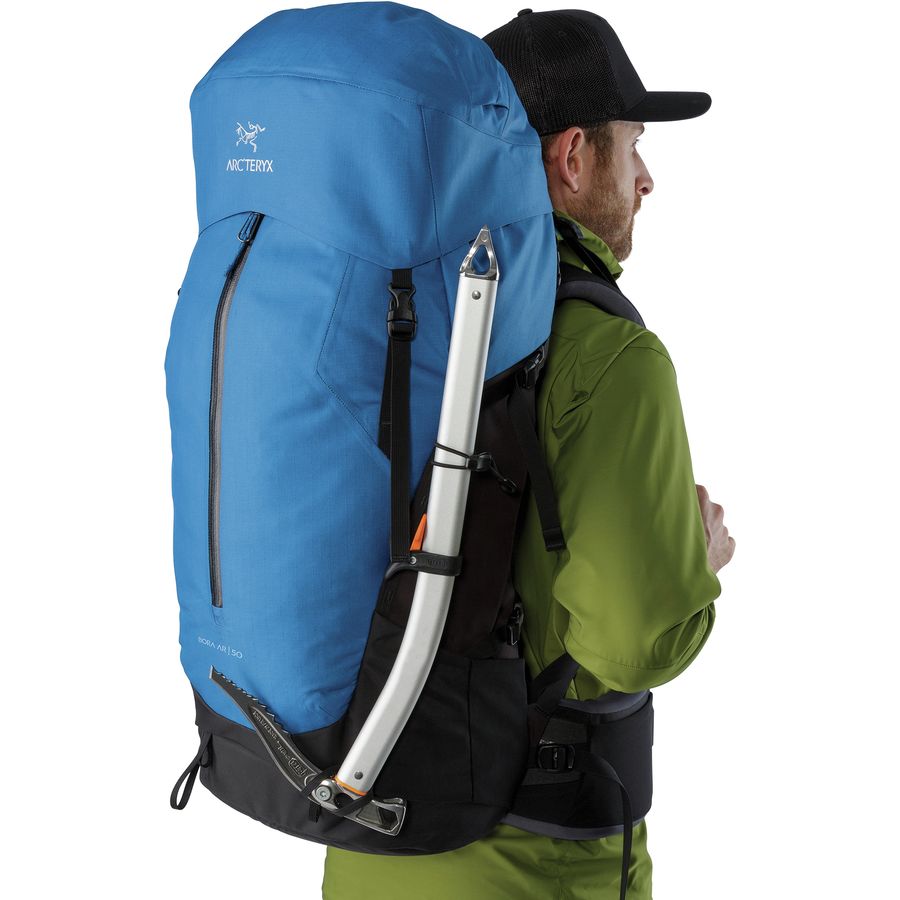Discover Pandipedia
Pandipedia is the world's first encyclopaedia of machine generated content approved by humans. You can contribute by simply searching and clicking/tapping on "Add To Pandipedia" in the answer you like. Learn More
Expand the world's knowledge as you search and help others. Go you!
Osprey Atmos AG 65
Known for its anti-gravity suspension that provides excellent comfort and back ventilation, making it ideal for carrying heavy loads during fieldwork[2].

Granite Gear Blaze 60
This lightweight pack can comfortably support up to 50 pounds, featuring a stretchy mesh front pocket and roomy hip belt pockets, enhancing its practicality for extensive field use[2][4].
Gregory Baltoro 65
Designed for heavy loads, this pack offers remarkable comfort and organization with multiple pockets and a suspension system built for stability[9][10].
Osprey Aether 65
Great for carrying sizable loads, it features intricate adjustability and a well-structured back panel for comfort over long treks[2][9].
Deuter Aircontact Core 65+10
This pack offers excellent organization options with multiple access points and a cushioned frame for comfort while carrying heavy gear[3][10].
ULA Circuit
A popular choice for long-distance hiking and backpacking, praised for its minimalist design and comfort in hauling heavy loads[9][10].
REI Co-op Flash 55
Known for its versatility, it can morph from a beginner to a sleek ultralight pack, perfect for both short and long trips[9][10].

Osprey Exos 58
This ultralight pack excels in load-bearing while being breathable, making it suitable for extended fieldwork[2][9].

Gregory Paragon 58
With ample organizational features and great adjustability, it’s an excellent option for weekend trips and longer excursions[9][10].
Kelty Coyote 65
A durable and affordable option with plenty of space and comfort, making it great for a variety of outdoor activities[4][10].
The North Face Recon 30L
This popular daypack offers good organization and is capable of holding a laptop securely, suitable for diverse fieldwork needs[3][7].

Patagonia Black Hole Pack 32L
A durable and waterproof backpack designed for rugged conditions, ideal for carrying gear in inclement weather[3].
Osprey Nebula 32
A versatile daypack that merges outdoor strength with urban styling, perfect for transitioning between fieldwork and daily use[3].
Volher Travel Backpack
A budget-friendly option with ample organizational pockets, making it suitable for everyday field use[3].
Timbuk2 Authority Deluxe
This offers excellent laptop protection along with spacious storage, making it suitable for professionals in the field[3].
North Face Borealis
Known for its comfort and organization, this pack works well as both a school and an outdoor bag[3].

Herschel Heritage
A versatile and stylish backpack that combines functionality with a classic look, useful for casual fieldwork[1].
Aqua Quest Defender 50L Backpack
Waterproof and rugged, designed for outdoor activities where moisture and durability are a concern[9].
Mammut Lithium Pro
Its robust construction and strategic pocketing make it suitable for demanding outdoor work[9].
Arc’teryx Bora AR 63
This backpack integrates advanced materials and design, providing a weather-resistant option for extensive fieldwork[10].
Mystery Ranch Glacier
Built for heavy loads, it excels in durability and comfort, ideal for extended trips into the backcountry[10].
CamelBak Cloud Walker 18
A lightweight and compact option providing hydration capability, suitable for day outings in the field[8].
Deuter Speed Lite 24
Great for light and fast movement, this pack features a sleek profile, ideal for active fieldwork[9].
Black Diamond Speed 30
Designed for climbing and other intense activities, offering a streamlined design and durability in rugged conditions[9][10].
Arc’teryx Futura 50
This is a durable and practical choice for wet conditions, built for professional use in challenging environments[8].

Quechua MH500
An affordable and fully-featured daypack, performing well on hikes and outdoor adventures, suitable for new users[10].
Let's look at alternatives:
- Modify the query.
- Start a new thread.
- Remove sources (if manually added).
- Request a manual search from our human research team.

Today, generative AI has seen significant expansion and adoption across various sectors[2]. Online course providers like Khan Academy and Udacity[1] are using generative AI to offer[1] more personalized and adaptive learning experiences for students, while Automation Anywhere is leveraging generative AI-powered automation deals[3] and partnerships to drive business growth. Additionally, companies are incorporating generative AI into new hire onboarding processes to provide personalized experiences and improve employee engagement and satisfaction[4]. The forecasted growth and advancements in generative AI technology[1] highlight its significant impact on enhancing operational efficiencies, driving business transformation, and improving education and employee experiences.
Let's look at alternatives:
- Modify the query.
- Start a new thread.
- Remove sources (if manually added).
- Request a manual search from our human research team.
Get more accurate answers with Super Search, upload files, personalised discovery feed, save searches and contribute to the PandiPedia.
Surname and Early History of the Stevenson Family
The Stevenson name appeared under various forms like 'Stevinstoun, Stevensoun, Stevensonne, Stenesone, and Stewinsoune' across Scotland from the Firth of Forth to the Firth of Clyde from the thirteenth century onwards[1]. The name also occurs as a place-name four times[1]. Despite this widespread presence, by 1700, no land appears to have been vested in any Stevenson[1]. However, legal records reveal other Stevensons involved in various aspects of Scottish life, including members of Parliament, burgesses, and individuals in trades such as foresters, bakers, and maltmen[1]. Some Stevensons were also involved in feuds and violent deaths, while others held positions such as bailies and physicians in Edinburgh[1]. One notable figure, John Stevenson, a 'Land-Labourer' in Carrick, was a devout Covenanter who faced persecution for his beliefs[1].
Tracing the Lineage: From Inconspicuous Maltsters to Engineers
The author traces his direct ancestors to James Stevenson in Nether Carsewell, parish of Neilston, county of Renfrew, who married Jean Keir in 1665[1]. Their son Robert, born in 1675, was possibly a maltster in Glasgow[1]. The lineage continues through subsequent Roberts, also maltsters, and their descendants[1]. The story focuses on two brothers, Hugh and Alan Stevenson, who rose to prominence in the West Indies but died young[1]. Alan's son, Robert, born in 1772, is a key figure in the narrative[1]. Robert's life takes a turn when his mother remarries Thomas Smith, an Edinburgh Merchant-Burgess and engineer to the Board of Northern Lighthouses[1]. Engaging anecdotes detail Thomas Smith's character as a high Tory, patriot, and businessman, including a story of him seeing his mother's ghost[1].
The Smith Family and the Fusion of Engineering Ambitions
Thomas Smith, the Edinburgh Spearman, founds a business in lamps and oils and becomes engineer to the Board of Northern Lighthouses[1]. He marries the widow of Alan Stevenson and brings together two families[1]. The stepson, Robert Stevenson, finds common ambitions with his stepfather in the emerging field of civil engineering, which was then more of a living art than a science[1]. Robert becomes involved in lighthouse construction, superintending works on the Isle of Little Cumbrae at nineteen[1]. This leads to a transformation in his character, marked by zealous industry and a commitment to self-improvement[1]. He studies mathematics, chemistry, natural history, and moral philosophy[1].
Domestic Life and Religious Sensibilities
The women of the Smith and Stevenson households are portrayed as deeply pious, contrasting with the more worldly ambitions of the men[1]. The letters depict acts of kindness from the women and affection, italics, texts, ecstasies, and imperfect spelling from their correspondents[1]. Jean Smith, Robert Stevenson's wife, is described as devout, unambitious, and easily shocked, associating with a clique of godly parasites[1]. Despite differing religious views, a strong bond remains between Robert and Jean[1]. Robert strives to respect and emulate his wife's piety[1]. The family faces significant trials, including the deaths of several children[1]. Letters from a former nursery maid and other correspondents poignantly capture the grief and sorrow experienced during these times[1].
Engineer's Life: Travel, Perils, and Encounters
Robert Stevenson's life is characterized by extensive travel, often to remote and dangerous locations[1]. As Engineer to the Board of Northern Lights, he undertakes perilous journeys by sea and land[1]. The Scottish coast, with its savage islands and desolate moors, presents unique challenges[1]. Voyages in the lighthouse tender involve navigating treacherous seas and dealing with unpredictable weather[1]. The engineer must be prepared to land on open beaches or among shelving rocks, facing the vicissitudes of outdoor life[1]. There are accounts of shipwrecks and encounters with wreckers, illustrating the harsh realities of life in the Scottish islands[1]. The narrative also touches on the superstitions and unique customs of the islanders[1].
Lightkeepers and Lighthouse Operations
The life of lightkeepers is explored, highlighting their isolation and the challenges they face[1]. Lightkeepers in sea towers often quarrel, while those on shore stations deal with family tensions[1]. The Scottish system emphasizes the dignity and comfort of lightkeepers, providing them with uniforms and attending to their needs[1]. However, lightkeepers are still subject to temptations and may become lax in their duties, requiring the engineer to act as a martinet[1]. The author details instances of his grandfather's strict oversight and efforts to maintain order and cleanliness in the lighthouses[1]. There are examples of lightkeepers engaging in smuggling and other illicit activities[1].
The Building of the Bell Rock Lighthouse
Robert Stevenson's most significant achievement is the construction of the Bell Rock Lighthouse, located on a dangerous reef off the coast of Scotland[1]. The project faces numerous challenges, including securing funding, transporting materials, and working in a harsh environment[1]. The narrative recounts the daily struggles and triumphs of the construction process, with details about the weather, the tides, and the ingenuity of the workers[1]. The lighthouse is built using innovative engineering techniques, drawing inspiration from Smeaton's Eddystone Lighthouse[1]. Key aspects of the tower's design include flat flooring-stones keyed into a central stone[1]. The project proceeds despite setbacks, such as the loss of the foreman builder, George Peebles, but a new foreman is quickly hired to continue the project[1].
Let's look at alternatives:
- Modify the query.
- Start a new thread.
- Remove sources (if manually added).
- Request a manual search from our human research team.
Let's look at alternatives:
- Modify the query.
- Start a new thread.
- Remove sources (if manually added).
- Request a manual search from our human research team.
Google computes the price for an ad using a unique auction model. The process involves determining the minimum bid an advertiser could have made to receive their ad allocation, framed as a hypothetical question. This calculation takes into account the ad score, which combines both the bid and the quality of the ad. Improvements in quality can lead to potential reductions in the required bid, allowing for better overall efficiency in ad placement[1].
In this second-price auction model, each higher placement carries a higher cost. Advertisers, like Booking, base their bids on their return on investment (ROI) goals, making the price-setting responsive rather than fixed[4][2]. Additionally, Google aims to benefit from innovations designed to improve advertiser outcomes by monitoring excess CPC, ensuring they retain the advantages from such advancements[3].
Let's look at alternatives:
- Modify the query.
- Start a new thread.
- Remove sources (if manually added).
- Request a manual search from our human research team.
Let's look at alternatives:
- Modify the query.
- Start a new thread.
- Remove sources (if manually added).
- Request a manual search from our human research team.
Get more accurate answers with Super Search, upload files, personalised discovery feed, save searches and contribute to the PandiPedia.

I consider ad extensions and ad formats to be sort of the same concept, which is optional information that can be presented to a user.
Dr. Juda[1]
Advertisers need to generate profit, else they will go out of business. So therefore, it's important for advertiser value to exceed advertiser cost.
Dr. Juda[1]

We very much have a culture of trying to improve search for our users. We are consumed by this.
Dr. Nayak[4]
There's no discussion. There's no kind of real like, oh, do you think this is a good idea or no.
THE WITNESS[2]
Usually, when it comes to sort of like our final, final determination, we usually try to trim the number of candidates to no more than a few hundred.
Dr. Juda[1]
Let's look at alternatives:
- Modify the query.
- Start a new thread.
- Remove sources (if manually added).
- Request a manual search from our human research team.
Strategic Site Selection Based on Coastal Prominence
The most important criterion for the placement of coastal lighthouses is that they must be located on the most prominent points of the coastline, or on locations first noted by mariners during over‐sea voyages. According to the text, these places should be prioritized to ensure that the most powerful lights are placed where they will be visible for the longest distance before a ship reaches land[1]. This means that natural headlands, projecting cliffs, and other outstanding coastal features are preferred sites because they offer the best chance of early detection by approaching vessels.
Using the Type of Light to Enhance Distinction and Visibility
In addition to site prominence, the kind of light must be carefully selected. The text underscores that revolving lights, which are inherently more powerful than fixed lights, are particularly suitable for outpost positions along the coast. Conversely, it advises that identical lights should not be placed too closely together; ideally, lights that share the same character and appearance should not be located within 100 miles of each other to avoid confusion among mariners[1]. Moreover, the text cautions against the indiscriminate use of colored media, suggesting that such distinctions in color should only be applied when absolutely necessary, as overuse may compromise the distinctiveness of each light.
Considerations for Physical Attributes and Elevation

Another vital aspect is the elevation of the light, which directly affects its range of visibility. Guidelines mentioned in the source recommend that the elevation for sea-lights should not exceed 200 feet, with about 150 feet being sufficient to meet most navigational needs. It is noted that while lights placed on high headlands are exposed to frequent fog, which can reduce effectiveness, placing them too low might not provide the required visibility. The balance, therefore, involves weighing the risk of fog against the advantage provided by an increased range of light, with the final decision being made based on careful local assessments[1].
Guidelines for Lighthouse Role and Functionality

The purpose of coastal lighthouses extends beyond simply providing a navigational aid; they also help in distinguishing one location from another along a coastline. The text emphasizes that for vessels traversing open seas, the placement of lights is instrumental in aiding navigation. For instance, lights meant to guard against hazards like reefs or shoals should be sited as far seaward as possible in order to provide early warning to seamen. In narrow seas, where the range of visibility is naturally limited, fixed lights (or sometimes less powerful ones) may be adequate and may be placed closer together than is advisable on open coasts[1].
Economic Considerations and Resource Allocation
Economic factors also play a significant role in guiding lighthouse placement. The text advises that concerns over initial construction costs should not compromise the selection of the ideal site. Instead, if funds are insufficient, it is better to delay building the lighthouse until an adequate sum can be raised to secure the best possible location. This approach highlights a long-term view in economic planning, ensuring that safety and efficient navigation take precedence over immediate cost savings. Furthermore, from an operational point of view, fewer lighthouses are considered preferable to prevent confusion for mariners, as every additional light may reduce the distinctiveness needed for effective guidance along the coast[1].
Integration with Local Navigation and Harbour Needs
The arrangement of lighthouses must also consider their role in guiding ships not only along open coasts but also into harbors. The report explains that the best position for a sea-light should not be compromised for the sake of a nearby port's short-term benefit. In many cases, a seaward light will serve as a beacon while supplementary lights can be added to lead vessels into the entrance of a port if needed. This strategy ensures that the requirements of both open-sea navigation and local harbor guidance are met efficiently, without overlapping functions that might lead to operational confusion[1].
Other Practical and Operational Considerations

Additional factors outlined in the text include the following considerations: (a) The physical characteristics of the coast itself can influence the efficiency of a lighthouse; for example, coastal configurations that are subject to extreme weather may require alternative designs even if they are prominent. (b) Distinctions based on the timing of flashes, or the differences between light and dark intervals, are less reliable because they are easily affected by atmospheric changes. Thus, lighthouses should be distinguished primarily by their characteristic appearances rather than by minute timing intervals. (c) In applications such as narrow seas, reduced distances between lighthouses may be acceptable as the range of the lights is inherently shorter. Finally, floating lights are discouraged due to the inherent risk of drifting and inconsistent performance[1].
Let's look at alternatives:
- Modify the query.
- Start a new thread.
- Remove sources (if manually added).
- Request a manual search from our human research team.

Setting effective goals is essential for personal and professional development. In this context, SMART goals provide a structured framework that enhances clarity and encourages successful outcomes. The SMART acronym stands for Specific, Measurable, Achievable, Relevant, and Time-bound, and each component plays a crucial role in goal attainment.
Specificity in Goal Setting
A well-defined goal is clear and straightforward. It eliminates ambiguity by specifying what needs to be accomplished. For instance, instead of saying, “I want to improve productivity,” a specific goal would be, “Increase productivity by 20% within the next quarter through better time management strategies”[11]. Addressing questions such as “What exactly do I want to achieve?” and “Who will be involved?” helps in crafting specific goals[9].
Measurable Goals
To ensure progress, goals must be measurable. This allows individuals to track their advancements and evaluate success. A measurable goal provides clear criteria for success, answering questions like “How will I know when the goal is accomplished?” and “What metrics will I use?” For example, instead of setting a vague aim to “get fit,” a measurable goal might be, “Exercise for 30 minutes, five days a week, for the next two months”[6]. By quantifying the objective, a sense of achievement can be fostered, promoting ongoing motivation.
Achievability of Goals
An achievable goal is realistic and attainable within the given resources and constraints. Setting goals that are too ambitious can lead to frustration and demotivation[10]. Therefore, it is vital to assess whether the goal is within reach, which involves considering available resources, skills, and time[12]. For example, “I will read one book a month” is more achievable than “I will read fifty books this year” if time and capacity are limited[6].
Relevance to Overall Objectives
Goals should align with broader life aspirations or organizational objectives to maintain motivation and relevance. A goal that resonates personally increases commitment. Therefore, one must ask, “Why is this goal important?” and “Does it tie into my long-term aspirations?” For example, a professional might set a goal to “Expand my professional network by attending one industry conference each quarter”[9]. Such relevancy ensures that the goal contributes meaningfully to personal or organizational growth.
Time-Bound Goals
Setting a timeline is essential as it creates urgency and accountability. Time-bound goals help prevent procrastination and push individuals to prioritize tasks effectively. Questions such as “When do I want to achieve this goal?” and “What deadlines can I set for interim milestones?” assist in establishing a clear timeframe[11]. An example of a time-bound goal is, “I will complete my project proposal by April 15,” which allows for adequate planning and execution[9].
Benefits of Using SMART Goals
The implementation of SMART criteria offers numerous advantages:
Enhanced Focus: SMART goals provide clarity and prevent distraction by defining explicit targets.
Increased Motivation: The structured approach of SMART goals can boost enthusiasm for achieving objectives as they become straightforward and actionable[12].
Improved Decision-Making: Specific goals allow for better resource allocation and prioritization within efforts, leading to more informed decisions[11].
Greater Accountability: With measurable and time-bound components, progress can be tracked effectively, holding individuals accountable for their actions[11][12].
Common Pitfalls in Setting SMART Goals
While SMART goals have proven effective, it's important to avoid certain pitfalls:
Setting Uninspiring Goals: Goals should be personally meaningful. Setting targets influenced solely by external pressures may lead to disengagement[11].
Neglecting to Reevaluate Goals: Regularly reviewing and adjusting goals according to progress and changing circumstances is crucial for continued growth and relevance[12].
Becoming Overly Focused on Metrics: While measurement is important, an obsessive focus on numbers can detract from the overall goal and lead to burnout[10].
Practical Steps for Implementing SMART Goals
To effectively implement SMART goals, consider the following steps:
Define Specific Goals: Clearly articulate what you aim to achieve and outline the actions necessary to get there.
Incorporate Measurable Criteria: Establish metrics to gauge your progress and celebrate milestones along the way.
Ensure Goals are Achievable: Assess your resources and capacity to ensure the goals you set are realistic yet challenging.
Align Goals with Relevance: Check that your goals fit within your larger life aspirations or the broader objectives of your organization.
Set Time-Bound Deadlines: Assign specific deadlines to your goals to enhance focus and encourage timely execution[11][12].
Conclusion
Setting SMART goals is an effective strategy for anyone looking to increase productivity and achieve significant results in their personal and professional lives. By focusing on the aspects of specificity, measurability, achievability, relevance, and time-bound elements, individuals can structure their goals effectively, leading to growth and success. Embracing this framework not only provides direction but also enhances motivation and accountability on the journey toward achievement.
Let's look at alternatives:
- Modify the query.
- Start a new thread.
- Remove sources (if manually added).
- Request a manual search from our human research team.

Whitening emulsions kits, like Crest Whitening Emulsions, offer several benefits. They are convenient, affordable, and can be used at home up to four times daily, allowing for gradual whitening without the need for frequent dental visits. The active ingredient, hydrogen peroxide, effectively breaks down tooth stains, while petrolatum helps retain the whitening agent on the teeth, potentially reducing sensitivity compared to other products[2][3][5].
However, drawbacks include potential side effects such as tooth sensitivity and gum irritation, particularly if overused[3][4]. Results may take time to appear, and the effects are not permanent, requiring ongoing maintenance to keep teeth bright[4][5]. It's crucial to follow instructions carefully to minimize risks[5].
Let's look at alternatives:
- Modify the query.
- Start a new thread.
- Remove sources (if manually added).
- Request a manual search from our human research team.































-3050.jpg?resizeid=3&resizeh=800&resizew=800)








